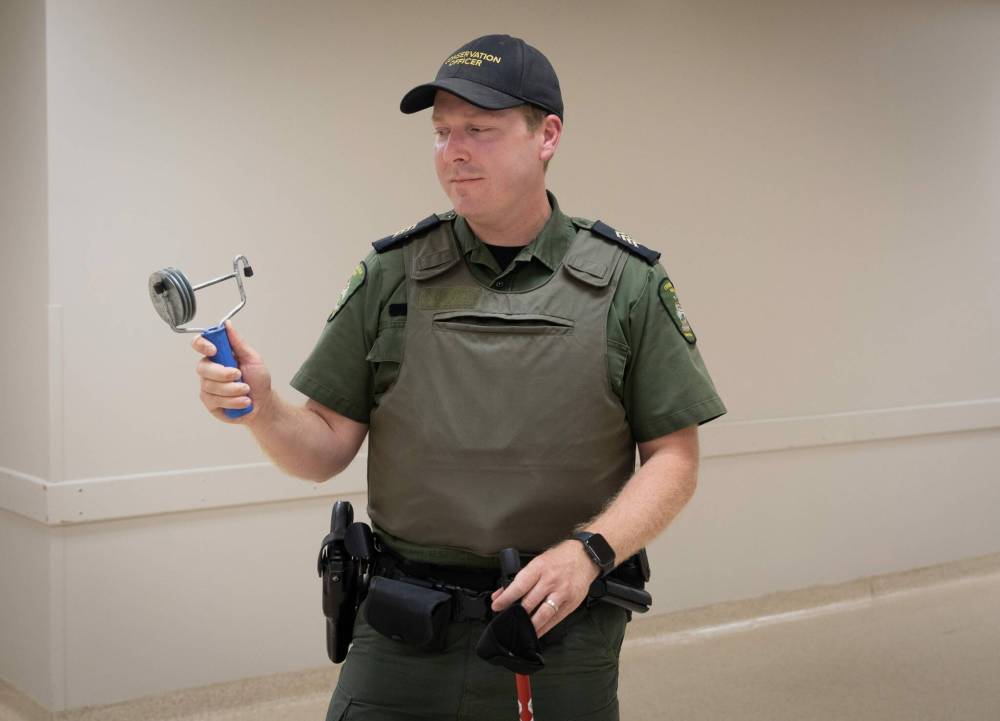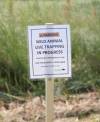‘Scaling down our operations’: Manitoba Conservation kills five coyotes after June attacks
Read this article for free:
or
Already have an account? Log in here »
To continue reading, please subscribe:
Monthly Digital Subscription
$0 for the first 4 weeks*
- Enjoy unlimited reading on winnipegfreepress.com
- Read the E-Edition, our digital replica newspaper
- Access News Break, our award-winning app
- Play interactive puzzles
*No charge for 4 weeks then price increases to the regular rate of $19.00 plus GST every four weeks. Offer available to new and qualified returning subscribers only. Cancel any time.
Monthly Digital Subscription
$4.75/week*
- Enjoy unlimited reading on winnipegfreepress.com
- Read the E-Edition, our digital replica newspaper
- Access News Break, our award-winning app
- Play interactive puzzles
*Billed as $19 plus GST every four weeks. Cancel any time.
To continue reading, please subscribe:
Add Free Press access to your Brandon Sun subscription for only an additional
$1 for the first 4 weeks*
*Your next subscription payment will increase by $1.00 and you will be charged $16.99 plus GST for four weeks. After four weeks, your payment will increase to $23.99 plus GST every four weeks.
Read unlimited articles for free today:
or
Already have an account? Log in here »
Hey there, time traveller!
This article was published 13/07/2023 (881 days ago), so information in it may no longer be current.
Manitoba Conservation has captured and killed five coyotes in the weeks following separate attacks on two children in North Kildonan, and pointed a finger at human interference.
“We are aware of several sites in (the Winnipeg neighbourhood) where people are deliberately feeding them,” said Staff Sgt. Graeme Smith said Thursday. “This situation is not going to be resolved if that keeps happening.”
Meantime, in the past six days, the number of coyote sightings in North Kildonan has plummeted to one per day, on average, in comparison to the previous reports of eight to 12, officials said.
The investigation into the recent attacks continues, Smith said, and DNA analysis will be made public in a couple weeks.
Officials also have bite mark analysis and measurements of coyote canine teeth from the first attack on a nine-year-old boy, who received 24 stitches to the back of his head June 24.
The boy was walking home with his 15-year-old sister near Popko Crescent and Knowles Avenue around 6:45 p.m., when a coyote approached and attacked. A neighbour who heard the boy’s screams used a shovel to scare the predator away.
On June 30, a coyote attacked a four-year-old girl from behind, near the retention pond at Headmasters Row. Saliva found on the child’s clothing is being tested at Trent University (Ont.) and the University of Manitoba.
An analysis of the five euthanized animals’ stomach contents in also being made to determine the coyotes’ habits and habituation.
The risk of further attacks is decreasing, but officials will continue to trap and kill habituated or aggressive coyotes, while monitoring other sightings and encounters in the city.
JESSICA LEE / WINNIPEG FREE PRESS “We feel that the more effective solution is to teach individuals how to co-exist with coyotes in our communities. We want to teach coyotes that any encounter with a human is a bad encounter,” said provincial wildlife biologist Dennis Brannen.
“We are now working toward scaling down our operations, but public safety is our priority,” said Sheldon Orvis of Manitoba Conservation.
Authorities said the local urban coyote population is in its “growing phase.” Based on observations, officials think there are packs living near Bunn’s Creek, North Kildonan, Kildonan Park, and another group south of Chief Peguis Trail.
“At this point in time, we have as little coyotes as we’re ever going to have,” Orvis said.
While the total number of dens is unknown, Manitoba Conservation has not identified the city’s carrying capacity for the coyote population, which can only feed so many mouths before the animals disperse to find their own territory, mate and food supply.
Based on a population study in 1975, relocating coyotes has proven to be ineffective in controlling a population, said provincial wildlife biologist Dennis Brannen. If an area removed 75 per cent of its coyotes annually, it would take 50 years to get the population to zero, he said.
JESSICA LEE / WINNIPEG FREE PRESS The risk of further attacks is decreasing, but officials will continue to trap and kill habituated or aggressive coyotes, while monitoring other sightings and encounters in the city.
“Coyote biology makes it virtually impossible to remove a coyote population from an area once it’s moved in,” Brannen said Thursday. “We feel that the more effective solution is to teach individuals how to co-exist with coyotes in our communities.
“We want to teach coyotes that any encounter with a human is a bad encounter.”
The biologist recommends people only report incidents where a coyote intentionally approaches a person or a pet, appears sick or injured or is being fed by a human, demonstrating aggressive behaviours or seen during the daytime in a school or daycare area.
It is important to remember coyotes are naturally timid animals, Brannen said. However, they will become more comfortable and aggressive with humans if they are fed by them, especially during March to August when the animals are hunting to feed pups.
If a coyote approaches, practice “hazing,” which is the act of appearing bigger than the animal by raising, for example, a piece of clothing over your head and shouting.
JESSICA LEE / WINNIPEG FREE PRESS Officer Graeme Smith demonstrates using a noisemaker to scare off coyotes.
Make sure to give the animal an escape route, remain calm, pick up small pets or children, and do not run, as this will create an instinctive chase response. Keep eye contact with the animal and do not turn away.
If a coyote attacks, fight back aggressively using any weapon available and strike for the eyes and nose.
Manitoba Conservation recommends carrying deterrents during walks, such as a whistle, noisemaker or walking stick.
tessa.adamski@freepress.mb.ca
History
Updated on Thursday, July 13, 2023 3:24 PM CDT: Photos added.








